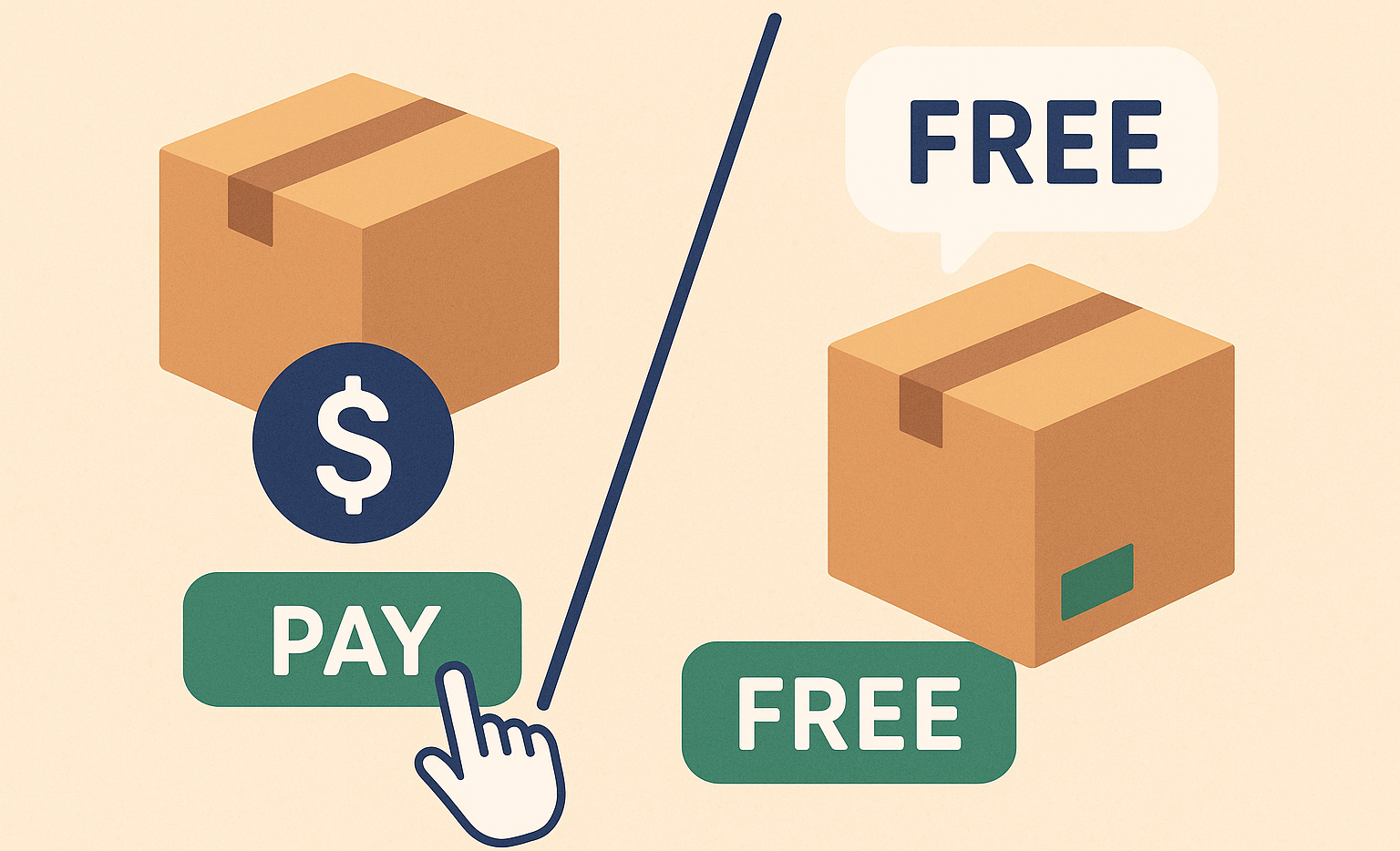
For many online shoppers, shipping costs can make or break a purchase decision. A well-chosen shipping model can increase conversions, boost average order value (AOV), and strengthen customer loyalty. But the wrong one? It can eat into margins or drive potential buyers away. The key is finding the right balance between customer expectations and your business’s bottom line.
Flat-Rate Shipping: Predictable and Simple
How it works: Customers pay a single, consistent shipping fee regardless of order size or distance.
Pros:
-
Easy to understand for customers
-
Simplifies checkout and reduces cart abandonment
-
Predictable for your business to manage
Cons:
-
May discourage smaller orders if the fee feels too high
-
Harder to cover variable costs for large or distant shipments
Impact: Flat-rate works well for stores with relatively uniform product sizes/weights. It builds trust through transparency but may need tweaking to stay competitive.
Threshold Free Shipping: Incentive with Control
How it works: Customers receive free shipping once their order surpasses a set spending limit (e.g., “Free shipping on orders over $50”).
Pros:
-
Encourages customers to add more to their carts
-
Lets you offset costs by higher order values
-
Flexible for seasonal promotions
Cons:
-
May exclude budget-conscious shoppers with smaller carts
-
Requires careful threshold setting to protect profit margins
Impact: This model often boosts AOV and conversions but hinges on knowing your average order size and product margins to set a profitable threshold.
Always-Free Shipping: Conversion Magnet
How it works: Shipping costs are baked into product prices, or absorbed as a marketing expense.
Pros:
-
Removes one of the biggest friction points in checkout
-
Can dramatically increase conversions and repeat purchases
-
Great for building a premium, customer-first brand image
Cons:
-
Cuts into profit margins if not offset by pricing adjustments
-
Higher product prices can hurt competitiveness if customers compare
Impact: Works best for high-margin products or subscription models, where lifetime customer value outweighs shipping costs.
Choosing What’s Right for You
The best shipping strategy depends on your products, margins, and audience expectations. Many successful stores blend approaches—using threshold free shipping for regular customers, flat-rate for heavy items, and occasional free-shipping promotions. By tracking conversion rates, AOV, and profit margins for each method, you can fine-tune a model that attracts customers without sinking your bottom line.
